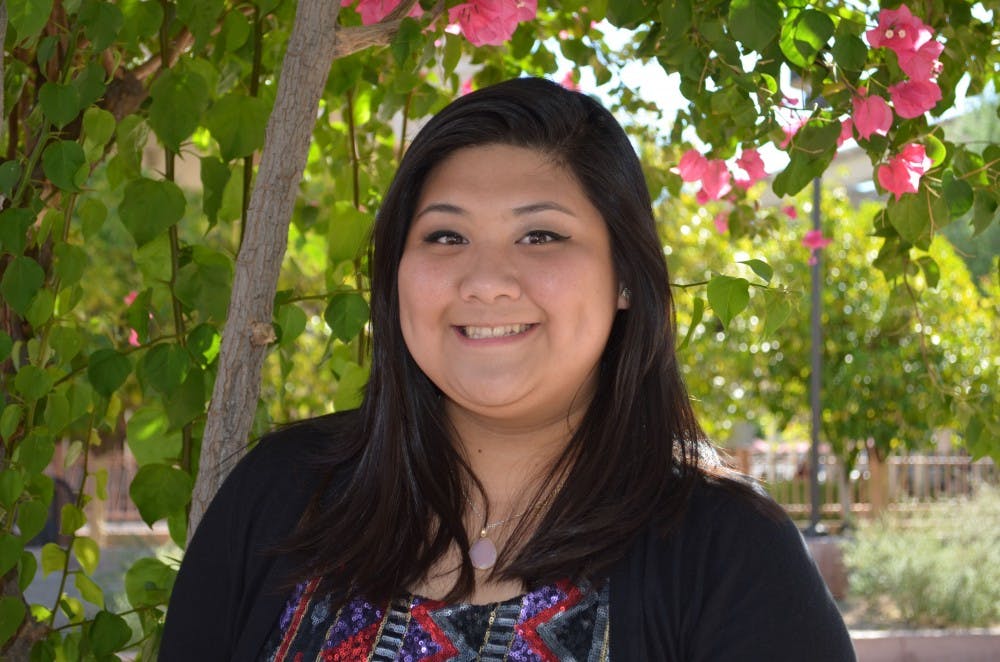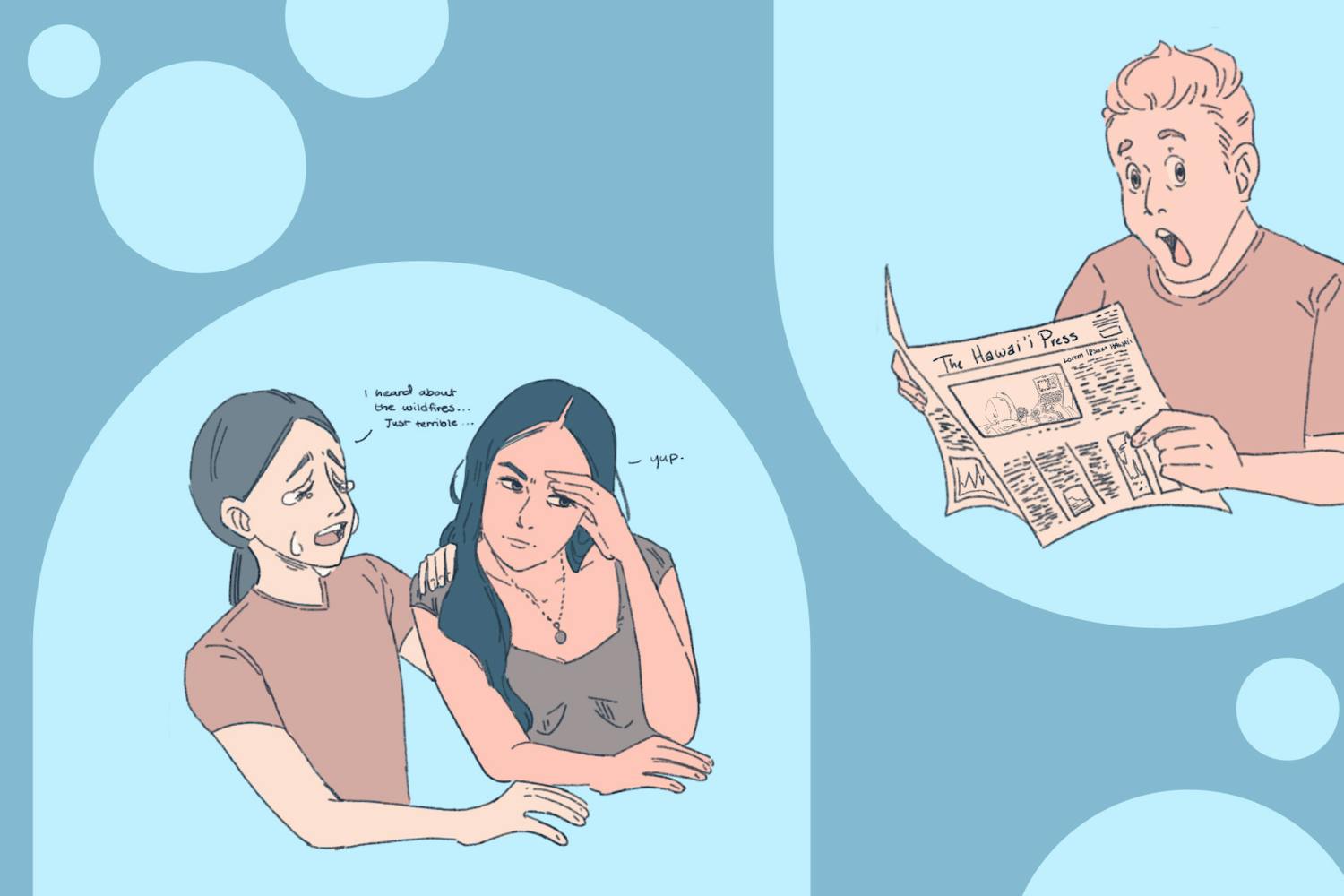 Diana Tran has been a part of the March of Dimes campaign for over 2 years. Photo by Luu Nguyen
Diana Tran has been a part of the March of Dimes campaign for over 2 years. Photo by Luu NguyenBiomedical engineering freshman Diana Tran maintains a gentle composure. Hands neatly placed on the table in front of her, she smiles sweetly. She appears completely calm until asked about March of Dimes. As if suddenly awakened, Tran’s eyes flicker with a certain spark. The words begin to rapidly flow from her lips. She shares her knowledge on the nonprofit organization’s past and speaks with hope for its future.
Despite only having been a part of the organization for two years, Tran is filled with passion and motivation for March of Dimes. As she exits the room there’s no doubt that there’s something special about this cause.
Across ASU’s four campuses there are over 1,000 registered student organizations, March of Dimes included. Many of these organizations revolve around advocating for a certain change. However, every club possesses their own way of going about this. Over the years certain organizations have mastered a successful routine to drive forth their purpose. Each of these organizations utilizes their own strengths and resources to activate their causes.
March of Dimes is a nonprofit organization geared toward improving the health of babies by preventing premature births. Originally established by former president Franklin D. Roosevelt as a foundation for polio, the organization's mission evolved once the polio vaccine was introduced. Tran is a part of the March of Dimes National Youth Council, a group of 18 undergraduate students from across the nation.
“We work with the national staff and talk about mission awareness, revenue development and outreach,” Tran says.
March of Dimes plans multiple events throughout the year that raise funds for research and aid for pregnant women. Besides making great strides in fundraising, the organization focuses heavily on educating everyone about their main mission, from members to officers.
“Our mission and statement by heart is ingrained into our mind,” Tran says. “We also have value statements and those are things people don’t hear very often.”
Aside from working on the national level for March of Dimes, Tran also acts as the liaison for the ASU branch, which broke off as a subgroup of Circle K International, another service-orientated organization, just this year.
“I’m here to really help them revamp their club, get them more involved in March of Dimes, stay true to their one mission and just make sure they have everything in line,” Tran says.
As Tran began work with the reinvented ASU March of Dimes she quickly identified the difficulties to starting up a new organization. While ASU’s March of Dimes had the support of the national organization, many causes don’t have the history and credibility they possess.
“People are very skeptical nowadays,” Tran says. “A lot of people now have a hard time trusting people, like nonprofit organizations because, ‘Are you really nonprofit? Where is my money going?’"
Tran believes one of the most important elements to running a successful organization is making sure there is proper funding.
"Nonprofit organizations, of course they have a great cause and they have great programs, but money is important and that’s one of the hardest things to really learn,” Tran says.
Even established organizations such as ASU’s Campus Student Sustainability Initiatives (CSSI), which is in its third year, is continuously evolving to reach its full potential of advocacy. Environmental Civil Engineering senior Jordan Rodriguez is the Director of Business Administration for CSSI.
“We want to make the campus as green as possible through our initiatives and projects and volunteer efforts,” Rodriguez says. “Really it’s about student empowerment for sustainability.”
In the past, CSSI has focused heavily on volunteering at events. Recently they have begun working to promote more of their own projects. Last year, CSSI was able to introduce reusable-water-bottle stations into the Memorial Union building at ASU and at football games. CSSI is also pushing to create more events catered to sustainability education.
“That’s one of the big things about sustainability that we’re trying to focus on: awareness or to get people, to try to educate them that there are better solutions available,” Rodriguez says.
Business Sustainability and Entrepreneurship senior Jared Greenberg is enthused by the idea of expanding the goals of their organization. He is the CSSI Director of Projects. Despite the extra projects it has required many of the officers to take on, Greenberg feels their organization is headed in the right direction.
“If you want it to be successful then it will [be],” Greenberg says. “Just kind of learn from it [failure] and evolve the club or project.”
Along with student organizations that centralize around specific causes, there are organizations that work solely to bring about change. The Memorial Union Advisory Board is an organization that consists of student members, professional staff and faculty that work towards the overall success of the MU. Supply Chain Management junior Garrett Bentley is President of the MU Advisory Board.
“We're getting into some policy as well,” Bentley says. “With a building as big as the MU there’s a lot of stuff that goes on that requires approval and the MU advisory board can give recommendations as to what direction to take regarding those decisions.”
This year, to ensure that all voices are heard during the decision process the MU Advisory Board is partnering with other organizations on campus such as Changemaker, Project Humanities, Culture at ASU and much more. By bringing in other organizations, the MU Advisory Board is looking to expand the impact they can make at ASU.
“Regardless of the organization, nothing gets done unless you get the students there to actually have fun and support your cause and make sure they’re really engaged into ASU as a whole,” Bentley says.
Despite the different causes organizations are centered around and the change they wish to bring about, each of these organizations had to start somewhere. The history behind larger organizations would have never formed without the drive and motivation from those who chose to take a chance.
“Honestly, it all comes down to fear,” Tran says. “Never be afraid to ask, don’t be afraid to utilize resources."
Tran acknowledges that people will support causes they feel strongly about. It's the organization's responsibility to ensure their cause is properly advocated.
"People really do want to make a change," Tran says. "You just have to find the people who have the time and effort to do so.”
Reach the writer at mchavan1@asu.edu or via Twitter @manalichavan72.




